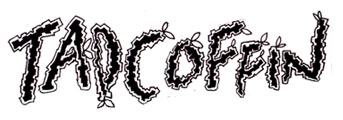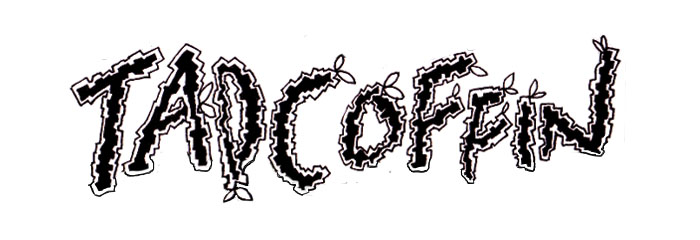Originally Posted April, 2015
Social media is fascinating. It is an entirely new form of communication that society has quickly embraced. Social media allows users to be in touch with people they probably never would have been otherwise. In case you live under a rock, Instagram is a widely used photo-sharing and commenting site with 300 million users (as of December 2014). It was purchased by Facebook in 2012 for roughly $1 billion. This essay will cover , and two areas of thought on Instagram: 1) how it works and 2) how users interact. Instagram is a very open social media platform, with the potential to become increasingly closed. Its users are mostly young and post things that on first inspection might be bizarre to older generations, yet some reflection provides an insight into a younger generation and marketing applications of the tool.
How it Works
First, with the how it works. Basically, a user will have followers that see the feed of images that that user posts, along with the feed of anyone else followed. Users can post photos to their feed with comments and hashtags. The hashtags are searchable by anyone on the network. All posts are made through mobile devices. Profiles can be open or closed. Open profiles, anyone can follow. Closed profiles require the account owner to approve. It is worth noting that even on closed profiles, posts can be found via hashtag searches. Those are the basics.
How it Works: The Good
Open
One of the things that is well liked about Instagram today is that a user will get all of the posts of the people a user follows with no filtering whatsoever in my feed. (Update – June 2016: This is no longer true – now an algorithm decides what posts to show a user! That means a user may never see some of their followers posts at all!) Some in-obstructive ads also show occasionally – more on that in a moment. So if a users follows ten people, and each of those ten people posts one image, the user will see all ten images in chronological order to the posting. Many users like this because it keeps the power of what media is shown strictly between the poster and the followers, with no interference from the Corporation or Elsewhere. (Again – this is no longer the case as of June 2016!) Other social media platforms do not operate in this manner, such as Facebook with its relevancy algorithms. The internet was founded on principles of openness and non-interference, and many hope it stays that way. So far, Instagram has been fairly unobtrusive as a moderator. (Not to beat a dead horse here, but again, this is no longer true.)
Easy to Make New Connections
Another thing users like about Instagram is that it is very easy to make new connections. A user can do a search for #art and find a million other artists posting their work and make comments either privately to that person, or as part of a social conversation along with the image posts. A user can also follow that person, or send a message to invite that person to follow one’s own account. It is also relatively easy to gain new followers, in that if a user follows another user, that person has some percentage chance of following back with no other interaction whatsoever.
Easy to Search by Interest
If an account holder wants to go for a more refined search that might filter out a lot of the notebook scribbles that get posted under #art, one can search for something more specific, such as #fineart or #fineartphotography. Search results come up purely by chronology, no other filtering. (Update June 2016: that is not entirely true – Instagram now puts more popular posts at the top, then continues to chronological sorting.) So unlike, say, Google, Instagram exerts very little influence on search result ranking. Now, Instgram DOES wield tremendous influence over suggested posts and suggested accounts to follow. The nice thing about that is a user can just ignore those features.
Unobtrusive Advertising
As far as advertising goes, it’s pretty unobtrusive. The ads look just like any other post, with some indication that it is an ad. These are generally targeted ads and are similar to many fashion magazine advertisements. Just like a fashion magazine, if a viewer doesn’t like the ad, he or she can just keep going, no harm. Although this feature can be considered a plus, it is also a negative in that these unobtrusive ads are almost subliminal in that they look like any other post. Nonetheless, compared to say popup ads, the ads are not likely to get in the way of a user experience.
Fair Mix of Demographic as far as Commercial vs. Non-Commercial Purpose
Users can be divided between commercial purposes, such as artist, and the “joy of sharing” users. There is a fairly good blend of the two. Anecdotal experiences lean toward users sharing just for the pleasure of sharing. Even those with a commercial purpose tend to be aware that their posts must be interesting and engaging to their audiences. It can be an inspirational pleasure seeing posts of hand-crafted artisan products and other products a user has an interest in. Even the accounts that have a clear commercial intent seem to tend toward the interesting rather than the banal saturation of “Buy This” we have come to know.
How it Works: The Bad
Owned by Facebook
Facebook is well-liked because it does much for connecting people and providing a platform for discussion, no matter how trivial or profound. Nonetheless, Facebook is in the business of making money, and in the process has tended toward messing things up. Filtering feeds is one of the main problem people have with Facebook. Instead of letting the users and posters decide who sees what, Facebook has stepped in and decided what should be seen and what shouldn’t. Facebook is annoying in a myriad of other ways, no doubt, like annoying advertising everywhere, but the big one for many people is control of the feed – users don’t like that Facebook controls what is seen on the feed. Oh yes, it is possible to sort by most recent, but the interface switches back to the algorithm every time you load the page. The functionality to sort by chronology is not obvious to the casual user.
Now, there is some good in how Facebook does their feed algorithm. It does actually tend to do a good job of showing things a subscriber is interested in. Many people actually do enjoy seeing things they are not interested in. Not everyone wants to live in an echo chamber. So far, Instagram has mostly not been infected with these traits. Being it is owned by Facebook, no one can be sure how much longer that can last. We shall see. (Update June 2016: We can now be sure – not very long.)
No Small-Scale Advertising
Another thing that an emerging artist or business might not like about Instagram is that there is no advertising interface. (Update June 2016: This is no longer true, a user can run ads on Instagram via the Facebook ad manager interface.) On Facebook or Google, if someone wants to spend $5 to promote a post, he or she can, for better or worse. Surely Big Brand can negotiate a better deal than an emerging artist, but at least a “small-time” user can play in the sand box. On Instagram, paid advertising is solely for the big boys, small accounts are not allowed to play. The upside is less crappy advertising, but it would be fun to be able to do small campaigns nonetheless.
Addictive Tendencies
I is becoming increasingly apparent that more or less all social media has an issue with addictive qualities – potentially “great” for share holders, not so good for society. Basically, it’s pretty easy to get caught up in the “How many likes? / How many followers?” game. For a commercial enterprise, those factors should be weighed against value of branding, while for a non-commercial user the quest for likes and followers is weighed against… what? How long it takes for your thumbs to fall off? Not many solutions to this problem have been presented. At some point, social media addiction will cause serious harm to individuals and a society that becomes obsessed.
How It Works: The Good, The Bad, The Conclusion
Ultimately, Instagram has a lot of value for emerging artists seeking to gain an audience. One point worth considering is that something like Instagram could be run in a more communal environment, like Wikipedia. Instead, the platform is controlled entirely by a few rich people. It is easy to say, well, when they mess it up, a new thing will come along. In reality, we just don’t know that that is the case. These social media platforms are becoming so entrenched in people’s lives, it is becoming increasingly difficult for people to abandon them. As far as a tool for getting eyeballs on an emerging artists images, it works.

